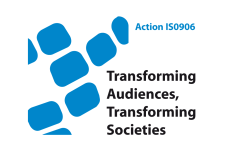- About the Action
- Events
- PhD workshop - Ljubljana 2014
- Action Open Conference - Ljubljana 2014
- New Media and Participation conference - Istanbul 2013
- Belgrade meeting 2013
- Media literacy research and policy - Brussels 2013
- ICA Pre-Conference 2013
- Tampere meeting 2013
- Budapest workshop 2012
- Milan meeting 2012
- Brussels PhD workshop 2012
- Brussels Action workshop 2012
- London meeting 2011
- Zagreb Conference 2011
- Lisbon meeting 2010
- Affiliated events
- WG 1
- WG 2
- WG 3
- WG 4
- Cross-WG
- Output
How media literate are we? The voices of 9 years old children about brands, ads and their online community practies
Costa, C., & Damásio, J.M., (2010). How media literate are we? The voices of 9 years old children about brands, ads and their online community practies. Obs*, 4(4).
http://www.obercom.pt/ojs/index.php/obs/article/download/421/392Abstract: The ubiquity of media in our society and the use of the Internet and in particular the World Wide Web as a convergent medium for a huge diversity of content and formats (movies in cinema and in YouTube, radio and cartoons on the Web and TV, social networks) has been a concern of academics, educators and governments. In what concerns to children audiences, the focus has been on safety and security of children and the correspondent online data protection. Questions of the impact of subliminal forms of marketing communication target to children start to emerge in a world where marketing strategies and entertainment are more and more connected. The main goal of this study is to explore what children aged from 8-10 years old think of brands, ads and their purpose. Can they understand the difference between a brand and an advertisement? Do they like/dislike ads? From which place/media/person they recognize brands and ads (even if they don’t use or know the product)? We are interested in questions such us: if children socialize more and more with media, what are the risks and the opportunities? Do they need a media literacy program or do they learn by themselves to distinguish informational and persuasive media? To answer these questions we have been working with an elementary school community (class) since March 2009. We have been using an ethnographic approach and our conceptual framework is based on the Activity Theory. The activities developed with children (community) are about old and new media learning, supported by the usage of a private Web Site (tool) (http://amigos.realcolegio.pt) and moderated by the researcher. The question of the engagement with new media and how to design and use such IT platforms at school is also discussed. The relationship of these children with media as “users”, as “spectators” and as “creators” has been observed and the results will be presented1.

